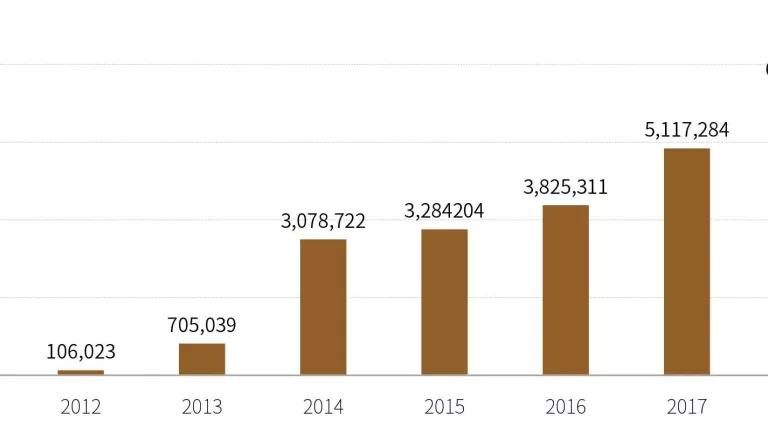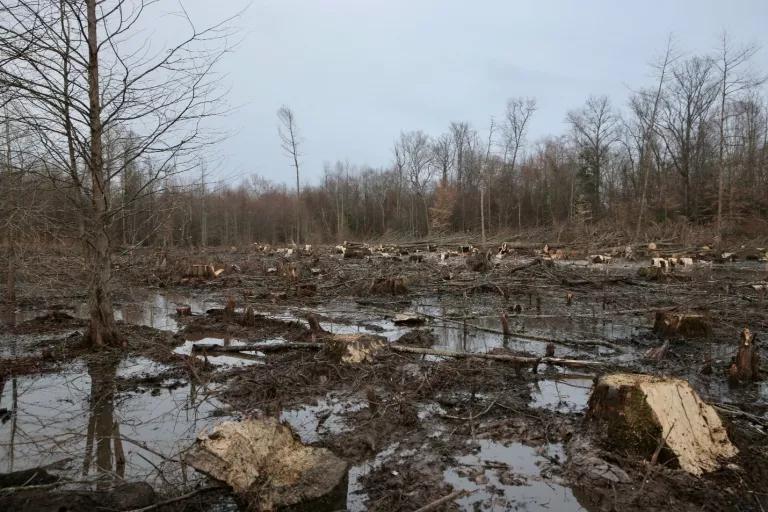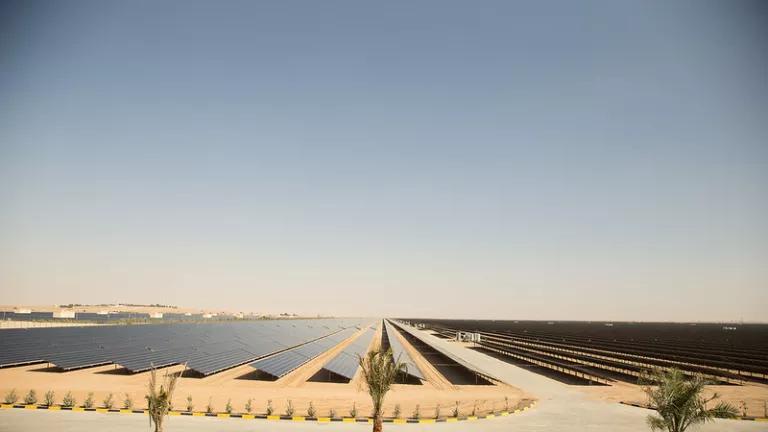South Korean Green New Deal Should Not Support Dirty Biomass

This post was co-written by Soojin Kim, a senior researcher at Solutions for our Climate (SFOC) an independent policy research and advocacy group based in South Korea.
In this month’s elections, South Korean voters elected the greenest government in history, one committed to a Korean Green New Deal that would put the nation on the path to zero emissions by 2050. It’s an exciting prospect, but if the country is serious about decarbonizing, it will need to reverse course and end its support for harmful wood-fired electricity.
South Korea, the world’s seventh largest greenhouse gas emitter, is heavily reliant on coal and has used dirty biomass energy to supplement that power under the mistaken theory that it’s better for the climate. It’s not.
Electricity generation from forest biomass grew 61 times from 106,023 MWh in 2012 to 6,490,437 MWh in 2018. This is equivalent to an annual increase of 160 percent. The majority of biomass energy, approximately 75 percent of all electricity generated from biomass in South Korea in 2018, came from coal-fired power plants co-firing forest biomass with coal.
Burning biomass for large-scale electricity generation threatens our climate, the world’s forests, and global efforts to transition from fossil fuels to truly clean energy. At the smokestack, biomass-burning increases greenhouse gas emissions compared to fossil fuels, and even accounting for forest growth, it results in more emissions in the atmosphere for decades or more. Biomass harvest for energy production also degrades the forest ecosystems of Korea, as well as biomass exporting countries, and hampers the healthy expansion of renewable energy.
Furthermore, biomass incentive mechanisms undermine the Korean Green New Deal and Korea’s Nationally Determined Contributions (NDCs). The “Green New Deal Basic Law” will include actions to expand renewable energy and policies to encourage investments in renewables through market-based initiatives such as the RE100. There have been debates among the private sector and civil society as to whether biomass should qualify as a renewable source of power in the RE100 discussions. However, the government has shown little interest in taking direct action to disqualify biomass from being an eligible renewable source. The newly elected 21st National Assembly must consider a swift transformation of renewable energy policy and urgent legislative actions to address these issues.
Biomass increases greenhouse gas emissions.
Korean utilities have boasted about the positive climate outcomes of their coal-to-biomass conversions, some reporting up to a 90% decrease in greenhouse gas emissions. This is misleading because the emissions from burning biomass were simply omitted under the erroneous assumption of biomass “carbon neutrality.” In reality, scientists have warned for years of the disastrous outcomes of burning biomass for power. Years of research has shown that even under best-case scenarios, burning biomass for electricity makes climate change worse for decades. A recent study from scientists, titled “Serious Mismatches Continue Between Science and Policy in Forest Bioenergy” concludes that burning biomass is incompatible with the objectives of the Paris Agreement, arguing that the revision of accounting rules is critical to removing the risk of incentives for imported biomass with negative climate impacts.
Despite the unequivocal messages from scientific communities around the world, countries do not account for greenhouse gas emissions from biomass due to the IPCC accounting convention to prevent double counting when estimating national inventories. Moreover, the emissions from international transport and shipping of biomass feedstock are also largely ignored due to a lack of consensus on international maritime emissions.
Korean biomass, too, is heavily dependent on imported feedstocks. For example, the import dependence of wood pellets in the last eight years was on average 98%. According to the Food and Agriculture Organization (FAO), a United Nations agency, Korea became the world’s 3rd largest importer of wood pellets in 2018. The rapidly increasing demand for wood pellets has become a threat to forest ecosystems in countries like Vietnam, Indonesia, and Malaysia, which contain some of the world’s most important biodiversity hotspots and are among the top exporting nations to Korea.

2012-2018 Korea wood pellet import trends (metric tons)
Note: According to the Korea Energy Economics Institute, a leading economics research agency, the temporary decline observed in wood pellet imports in 2015 was due to falling oil prices and rising temperatures.
Biomass is disrupting the renewable energy market.
Biomass has become the largest source of renewable energy in South Korea, making up 40 percent of total Renewable Energy Credits (RECs) on average between 2014-2018. At the same time, the price of RECs has continued to decline, marking a record low spot sales price at around 50,000 Korean won (equivalent to 41 US dollars) in 2019. This is a significant reduction compared with the REC spot price during 2016-2017 when it stood between 100,000 and 170,000 Korean won. Overcompensating biomass RECs is one of the main drivers for the excess supply of RECs.
As Korean utilities are discouraged from investing in other genuinely clean and renewable sources, such as solar and wind, more companies are participating in the biomass business. The biomass business has proven to be extremely profitable, thanks to the various forms of subsidies provided by the government and the low cost of construction and operation.
First, biomass energy producers receive REC multipliers that help them obtain more RECs per unit of electricity generated. In addition to this, biomass companies receive the Renewable Energy Portfolio Standard Implementation Cost Settlement (RPS-ICS) in cash, calculated based on the cost of construction and operation. According to the Auditor General Office report published in 2016, these costs are overestimated, some by 15 times higher than the actual costs of running a biomass plant. Lastly, utilities have received government support for retrofitting their old coal power plants to biomass plants.
As long as these subsidies are offered, Korean utilities will continue to resort to biomass to meet their RPS quotas. Korea currently has about 1,520 MW installed capacity of biomass, (excluding all power plants 3 MW or under) as of 2019. Korea plans to add an additional 1,130 MW of biomass in the next few years once all the plants in the pipeline compete the construction.
Biomass threatens forest ecosystems everywhere.
Sourcing and burning forest biomass for large-scale electricity production not only increases greenhouse gas emissions, but also damages forest ecosystems. When forests are logged, the amount of carbon stored in that forest is reduced, even under a best-case scenario in which harvested trees are immediately replanted or naturally re-grow. A recently published study showed that the same holds true even when biomass energy is generated by burning forestry residues—the leftovers from logging operations, like treetops and limbs.
To see how destructive biomass electricity is to our environment and climate, one needs to look no further than the sourcing practices of Enviva, the U.S. pellet manufacturer and supplier to energy giants like Drax Power in the UK. Photographic evidence collected since 2013 demonstrates that Enviva routinely sources biomass from clearcuts of mature hardwood forests in the Atlantic coastal plain, a region that has been designated as a global biodiversity hotspot.

Korea's drive to biomass not only endangers tropical forests in South East Asia but also poses a threat to the health of domestic forest ecosystems. The Korean government is rapidly ramping up the domestic production of wood pellets made of forestry residues by providing subsidies for both pellet producers and consumers (mainly utility companies) of wood pellets. Logging bans have been lifted and regulations have been eased to fast-track this process. Furthermore, higher RECs have been introduced to encourage the use of biomass made of “residues,” which are ambiguously defined, and eligibility has been extended to allow more roundwood (whole trees—the most carbon-intensive form of biomass) to qualify. Consequently, the production of biomass residues has nearly quadrupled between 2018 and 2019, and many utilities have already secured long-term purchase agreements.
Urgent tasks for the new National Assembly
We urge the 21st National Assembly to urgently revise biomass policies in South Korea. Scientists have warned us of irreversible climate catastrophes if we do not drastically reduce greenhouse gas emissions within the next decade and increase the removal of carbon from our atmosphere. Natural forests are one of the most effective natural climate solutions for absorbing excess carbon, and we must prioritize their protection and restoration, not burn them to produce electricity. We expect to see some meaningful changes in 2020-2021 as the government prepares to update its REC schedule and related laws.
To learn more, you can find the latest report “Can Biomass Qualify as Renewable Energy? The State of Biomass Policy in South Korea” by Solutions for Our Climate at the following link: http://www.forourclimate.org/research/biomass_eng.




